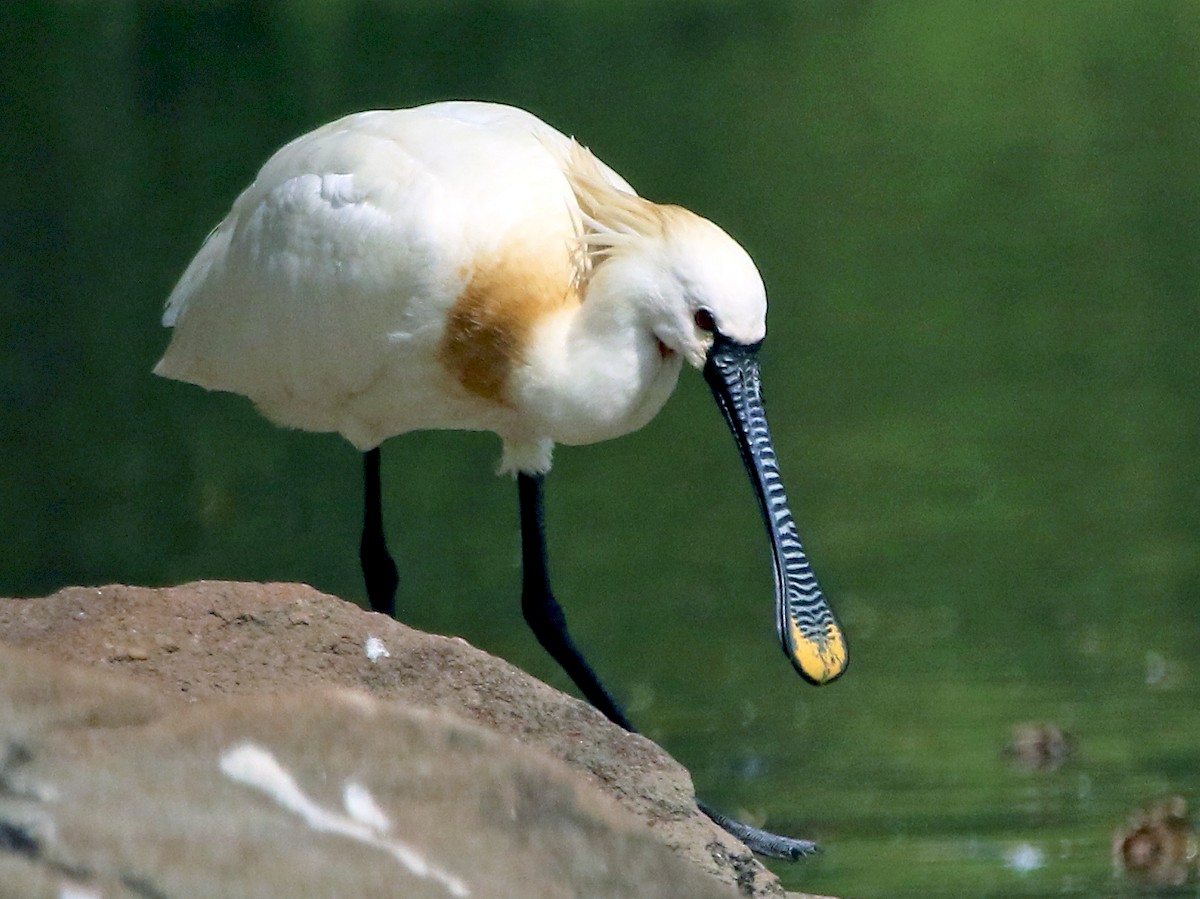
Eurasian Spoonbill
Platalea leucorodia
Order:
Family:
Size:
70-95 cm
Weight:
1130-1960 g
Taxonomy:
P. l. leucorodia (Linnaeus, 1758)
Short Description:
The Eurasian spoonbill or common spoonbill (Platalea leucorodia) is a wading bird of the ibis and spoonbill family Threskiornithidae. The genus name Platalea is from Latin and means "broad", referring to the distinctive shape of the bill, andleucorodia is from Ancient Greekleukerodios "spoonbill", itself derived fromleukos, "white" anderodios "heron". This species is almost unmistakable in most of its range. The breeding bird is all white except for its dark legs, black bill with a yellow tip, and a yellow breast patch like a pelican. It has a crest in the breeding season. Non-breeders lack the crest and breast patch, and immature birds have a pale bill and black tips to the primary flight feathers. Unlike herons, spoonbills fly with their necks outstretched. The Eurasian spoonbill differs from the African spoonbill with which in overlaps in winter, in that the latter species has a red face and legs, and no crest. They are mostly silent. Even at their breeding colonies the main sounds are bill snapping, occasional deep grunting and occasional trumpeting noises. More northerly breeding populations are fully migratory but may only migrate short distances while other, more southerly populations are resident and nomadic or partially migratory. In the Palearctic, the species breeds in spring (e.g. from April) but in tropical parts of its range it times breeding to coincide with rainfall. Breeding is normally in single species colonies or in small single species groups amidst mixed-species colonies of other waterbirds such as herons, egrets and cormorants. Outside the breeding season Eurasian spoonbills forage singly or in small flocks of up to 100 individuals. Migration is usually conducted in flocks of up to 100 individuals. Most activity takes place during the morning and evening (although in coastal areas it foraging is governed by tidal rhythms), they often roost communally in roosts which are up to 15 km (9.3 mi) away from the feeding areas. The nest is a platform of sticks and vegetation which is either constructed on the ground on islands in lakes and rivers or in dense stands of reeds, bushes, mangroves or deciduous trees up to 5 m (16 ft) above the ground. Within colonies neighbouring nests are usually quite close together, no more than 1 or 2 m (3.3 or 6.6 ft) apart. Breeding colonies are normally sited within 10–15 km (6.2–9.3 mi) of feeding areas, often much less (although the species may also feed up to 35–40 km (22–25 mi) away). In Pakistan Spoonbill is a frequent winter migrant, with about one-third of the population consisting of breeding residents. Prefers large lakes and rivers where it can forage in shallow waters.
Far far away, behind the word mountains, far from the countries Vokalia and Consonantia, there live the blind texts. Separated they live in Bookmarksgrove right at the coast
Bahawalpur,Kasur,Multan,Attock,Hafizabad,Khanewal,Mianwali,Rawalpindi,Sargodha,Sialkot,Badin,Dadu,Karachi Central,Larkana,Sanghar,Sukkur,Thatta,Karachi East,Karachi South,Karachi West,Bannu,Kurram,North Waziristan,Haripur,Mardan,Swat,Peshawar,Pishin,Mirpu
Eurasian Spoonbills are usually seen foraging in shallow water, often in small groups or individually. They sweep their bills from side to side in a distinctive feeding motion, relying on touch to detect and capture prey. Outside of the breeding season, they may form larger flocks, roosting and feeding communally in suitable wetland habitats.
Far far away, behind the word mountains, far from the countries Vokalia and Consonantia, there live the blind texts. Separated they live in Bookmarksgrove right at the coast
About Photographer : Hello World
Facebook
Twitter
Instagram
Flicker
LinkedIn

